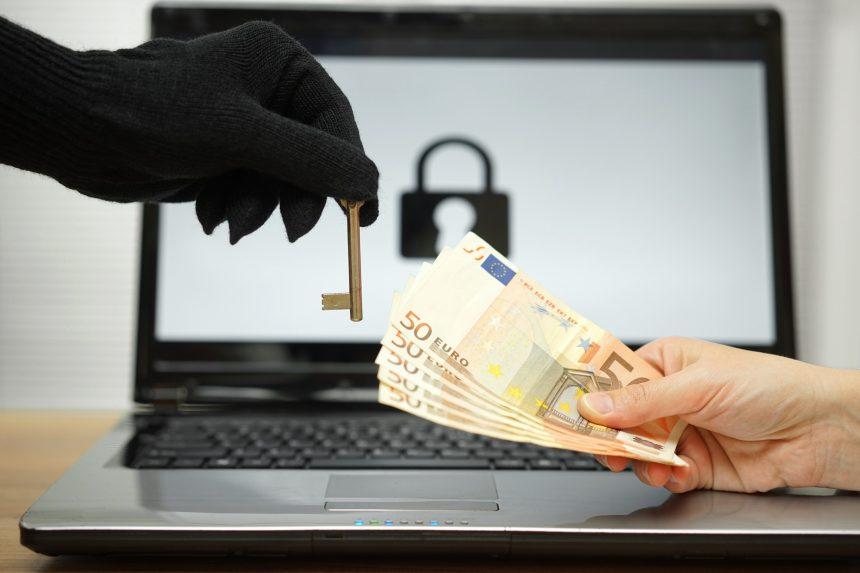The WAQA File Virus stands out as a particularly pernicious form of malware. This malicious software, known as ransomware, is designed to encrypt files on a victim’s computer, rendering them inaccessible until a ransom is paid. Victims of this malware often find themselves in a dire situation, faced with the choice of either paying the ransom or losing access to important files forever. In this article, we’ll delve into the workings of the WAQA File Virus, its consequences, detection names, similar threats, and most importantly, provide a comprehensive guide on how to remove it from your system and prevent future infections.
Actions and Consequences
The WAQA File Virus operates by infiltrating a victim’s computer through various means, such as malicious email attachments, infected websites, or bundled with other software downloads. Once inside, it proceeds to encrypt files using a strong encryption algorithm, effectively locking the victim out of their own data. Upon completion of the encryption process, the malware typically leaves behind a ransom note, instructing the victim on how to pay a sum of money in exchange for the decryption key.
The consequences of falling victim to the WAQA File Virus can be severe. Businesses may face significant downtime and loss of productivity, while individuals may lose cherished personal files such as photos, documents, and videos. Moreover, there is no guarantee that paying the ransom will result in the restoration of files, as cybercriminals are not bound by any code of ethics.
The WAQA Ransom Note
The WAQA ransomware leaves a ransom note on the desktop and in every folder of your computer that contains encrypted files. In the ransom note, the cyber criminals present their demands and communication demands. They offer to decrypt one file for free, as an insurance that once you pay the ransom they’ll be able to provide decryption. Communication with the hackers, however is strongly discouraged, as there is no guarantee that they will provide you the decryption tool/key after payment.
Here are the contents of the ransom note:
ATTENTION!
Don’t worry, you can return all your files! All your files like pictures, databases, documents and other important are encrypted with
strongest encryption and unique key.
The only method of recovering files is to purchase decrypt tool and unique key for you.
This software will decrypt all your encrypted files.
What guarantees you have?
You can send one of your encrypted file from your PC and we decrypt it for free.
But we can decrypt only 1 file for free. File must not contain valuable information.
You can get and look video overview decrypt tool:
https://we.tl/t-FCWSCsiEWS
Price of private key and decrypt software is $1999.
Discount 50% available if you contact us first 72 hours, that’s price for you is $999.
Please note that you’ll never restore your data without payment.
Check your e-mail “Spam” or “Junk” folder if you don’t get answer more than 6 hours.
×
To get this software you need write on our e-mail:
support@freshingmail.top
Reserve e-mail address to contact us:
datarestorehelpyou@airmail.cc
Your personal ID:
08440Skw
Detection Names and Similar Threats
The WAQA File Virus may be detected by various antivirus and antimalware programs under different names, including but not limited to:
- Trojan-Ransom.Waqa
- Ransom:Win32/Waqa.A
- Ransom.Waqa
- Trojan.Encoder.30934
- W32/Filecoder_WAQA.A!tr
Similar threats to the WAQA File Virus include other ransomware variants such as WannaCry, GandCrab, Locky, and Ryuk, which operate on similar principles of file encryption and ransom demands.
Removal Guide
Removing the WAQA File Virus from your system is a crucial step in regaining control of your files and ensuring the security of your computer. Follow these steps carefully:
Step 1: Disconnect from the Internet
Step 2: Boot into Safe Mode
Step 3: Identify Malicious Processes
Step 4: Terminate Malicious Processes
Step 5: Delete Malicious Files and Folders
Step 6: Remove Malicious Registry Entries
Step 7: Restore Encrypted Files (if possible)
Step 8: Perform Full System Scan
Prevention Tips
Preventing future infections of the WAQA File Virus and similar threats requires a proactive approach to cybersecurity. Here are some best practices to follow:
- Keep your operating system and software up-to-date with the latest security patches.
- Exercise caution when opening email attachments or clicking on links, especially if they are from unknown or suspicious sources.
- Use reputable antivirus and antimalware software and keep it updated regularly.
- Backup your important files regularly to an external hard drive or cloud storage service.
- Enable firewall protection on your computer.
- Educate yourself and your employees about cybersecurity best practices and the dangers of malware.
By following these prevention tips and staying vigilant, you can reduce the risk of falling victim to the WAQA File Virus and other malware threats.





